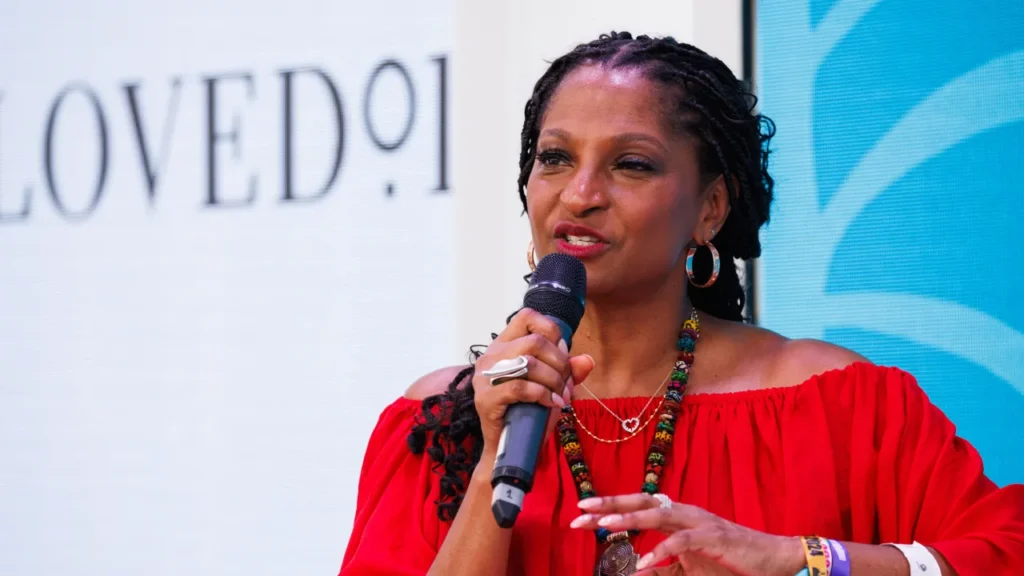
Last week, some of the world’s most notable brands, creatives, and executives gathered at Cannes Lions to explore the issues shaping the future of advertising and communications—from the rise of AI to the growing importance of ESG to the topic currently under fire: diversity, equity, and inclusion.
Since January, many across the industry have noted a shift. The momentum behind DEI—once front and center—has been dimmed by growing backlash, driven largely by U.S. political pressure and a wave of corporate rollbacks. These critics are trying to distract, deflect, and delay progress. But they won’t win.
Despite the backlash, it wasn’t hard to find leaders at the festival choosing courage over caution. Leaders like Adrianne C. Smith, founder of the Cannes Can: Diversity Collective (CC:DC) and chief inclusion and impact officer at FleishmanHillard, who opened the fifth Inkwell Beach installation with a clear message: “Don’t talk about it. Be about it.” This call to action resonated with me and many others, but it raises an important question: were brands and their leaders in attendance truly listening?
As we head into the second half of 2025, one thing is clear: the metric brands must begin to track, integrate, and prioritize is Return on Inclusion. It’s the ROI that will define the future of the creative industries—and it’s one brands can no longer afford to ignore. Here’s why.
Brands Should Hit the DEI Reset Button–As Long as It’s Done with Intention
Amid the glitter and glamour, spaces like Inkwell Beach stand out—not as performative checkboxes, but as intentional, purpose-driven platforms for real progress. One of the most rewarding aspects of Cannes Lions is hearing diverse perspectives that truly move our industries forward.
One of these leaders is Frank Starling, VP and Chief DEI Officer for Cannes Lions. We sat down to discuss what’s next for DEI, what brands should be thinking about now, and where they can focus to make a meaningful impact. As Frank pointed out, as a world, we are living in a paradox: hyperconnected, yet more fragmented than ever. This is why brands must prioritize both relevance and resonance and be ready to answer two crucial questions:
How do we reset with intention? And what does that look like inside our organization?
In 2025, the workplace is more generationally diverse than ever. According to SHRM, as many as five generations—traditionalists, baby boomers, Gen X, millennials, and Gen Z—can now be found at the same company, sometimes at the same table. These employees need to feel safe—psychologically and physically. And it’s up to brands to make more, not less, room for the unique perspectives, values, and lived experiences they bring.
According to Frank, in today’s fast-changing world, we must build and foster climates that spark creativity and innovation. Every organization’s DEI reset will look different—but it must be rooted in intention.
Creativity Drives Disruption. And You Can’t Spell Creativity without E&I.
When I launched The Sway Effect in 2019, I knew two things were nonnegotiable: diversity, equity, and inclusion had to be central to everything that we do, and we would only collaborate with brands that believed inclusivity leads to the best work.
Research continues to prove this: according to Harvard Business Review, inclusive organizations are
- 73% more likely to reap innovation income
- 70% more likely to capture new markets
- up to 50% more likely to make better decisions, and
- up to 36% more likely to have above-average profitability.
The bottom line is, inclusivity separates the leaders from the followers—and shows both employees and customers that you are showing up for the communities that you represent and serve.
Despite the clear value of this approach, fear—not conviction—is driving too much of today’s creative work. And it’s not surprising, with critics like Elon Musk declaring that “DEI must die” and the U.S. government labeling some DEI efforts as “egregious and discriminatory.”
But apprehension cannot outweigh the responsibility to build safe, inclusive workplaces—and create lasting impact across our industries. After all, you can’t spell creativity without E&I—Equity and Inclusion. When I shared my 2025 (and beyond) mission statement with Frank, here’s how he expanded on the vision:
- Ensure that inclusive leadership is at the center of your organization.That means collaborating across differences, challenging bias, and leading with courage and cultural intelligence.
- Embed inclusion to spark innovation and creativity. Make space for everyone to speak up, challenge ideas, and be themselves. That sense of belonging fuels innovation.
- Focus on impact over volume. Pull back, assess what will truly move the needle, and invest your time, budget, and resources there.
The Future Belongs to Those Who Show Up—and Stay the Course
As the dust settles from a thought-provoking week on the Croisette, one thing is clear: there will always be a place for purpose. My message to brands post-Cannes is this—measure DEI success not just by return on investment, but by Return on Inclusion. That’s what will shape the future of creativity, culture, and DEI. Lead the conversations. Build the culture. Drive the change. Those are the brands—and the leaders—that will always have a seat at my table.

